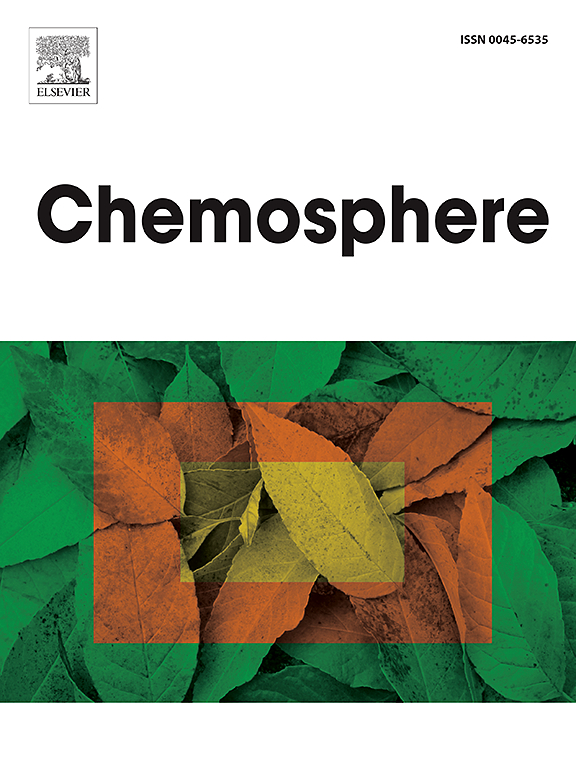基于Bi-MOF/导电聚合物复合材料的铅离子高灵敏度电化学传感器。
IF 8.1
2区 环境科学与生态学
Q1 ENVIRONMENTAL SCIENCES
引用次数: 0
摘要
本文将导电聚苯胺(PANI)化学聚合在铋基金属有机骨架(Bi-MOF)表面,形成导电PANI@Bi-MOF复合材料。FT-IR和PXRD测量证实了PANI@Bi-MOF的成功生产,而SEM, TEM和EDAX映射表明,聚苯胺被均匀地涂覆在Bi-MOF表面。利用循环伏安法(CV)和电化学阻抗谱(EIS)对所得PANI@Bi-MOF复合材料进行了表征,然后利用差分脉冲阳极溶出伏安法(DPASV)开发了一种灵敏的铅离子检测电化学传感器。该传感器检测限低,仅为0.0108 μg/L,线性检测范围宽(0.025 ~ 20 μg/L)。该传感器成功地应用于实际水样中Pb2+的检测,对其他共存金属阳离子的响应可以忽略不计。本工作为水中Pb2+离子的检测提供了一种可行的方法。本文章由计算机程序翻译,如有差异,请以英文原文为准。

Highly sensitive electrochemical sensor for lead ions based on Bi-MOF/conducting polymer composites
Herein, conductive polyaniline (PANI) was chemically polymerized on the surface of a bismuth-based metal-organic framework (Bi-MOF) to form conductive PANI@Bi-MOF composites. FT-IR and PXRD measurements verified the successful production of PANI@Bi-MOF, whereas SEM, TEM, and EDAX mapping demonstrated that PANI was uniformly coated on the surface of Bi-MOF. The resulting PANI@Bi-MOF composites were characterized by cyclic voltammetry (CV and electrochemical impedance spectroscopy (EIS), then used to develop a sensitive electrochemical sensor for the detection of lead ions based on differential pulse anodic stripping voltammetry (DPASV). The developed sensor possessed a low detection limit of 0.0108 μg/L and a wide linear detection range (0.025–20 μg/L). The sensor was successfully applied for the detection of Pb2+ in real water samples, showing negligible response to other coexisting metal cations. This work offers a feasible approach for detecting Pb2+ ions in water.
求助全文
通过发布文献求助,成功后即可免费获取论文全文。
去求助
来源期刊

Chemosphere
环境科学-环境科学
CiteScore
15.80
自引率
8.00%
发文量
4975
审稿时长
3.4 months
期刊介绍:
Chemosphere, being an international multidisciplinary journal, is dedicated to publishing original communications and review articles on chemicals in the environment. The scope covers a wide range of topics, including the identification, quantification, behavior, fate, toxicology, treatment, and remediation of chemicals in the bio-, hydro-, litho-, and atmosphere, ensuring the broad dissemination of research in this field.
 求助内容:
求助内容: 应助结果提醒方式:
应助结果提醒方式:


